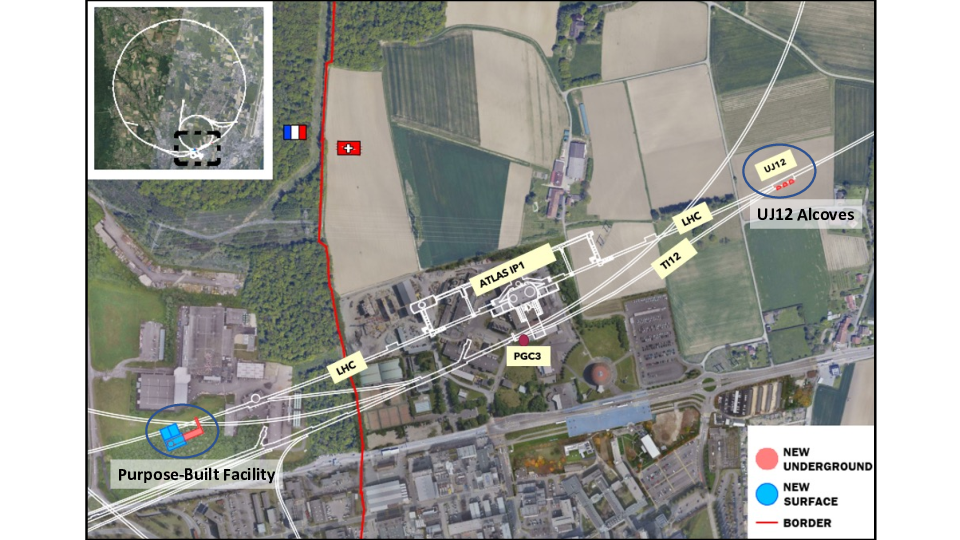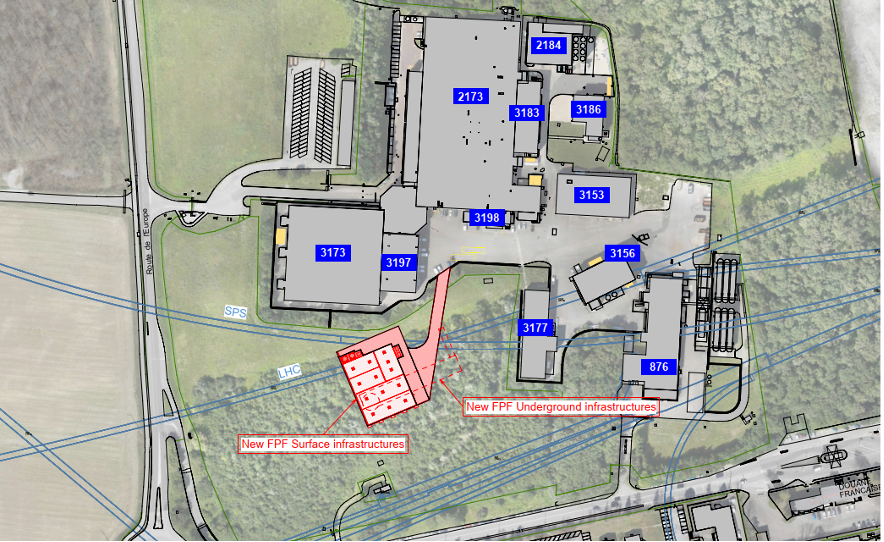Several possible locations for the FPF around the ATLAS and CMS interaction points were studied by the CERN civil engineering team. After taking into account technical, scientific, and resource considerations, the site selected is a dedicated standalone new cavern situated 617 m to the west of the ATLAS interaction point (IP1). The site is in France, on land owned by CERN. The facility is made up of a dedicated access shaft 88 m deep, connected to a cavern that is 65 m long, about 9 m wide/high, and centered on the collision axis line-of-sight (LOS). The dimensions of the cavern were defined based on the requirements of the proposed FPF experiments. There is at least 10 m of rock between the cavern and the LHC tunnel, which minimizes radiation and beam-related backgrounds in the facility and is also needed to ensure that the LHC tunnel will not be affected during the excavation of the FPF cavern. Preliminary studies indicate that civil engineering work to excavate the FPF cavern could be carried out during LHC operations and the vibrations from the excavation would not limit the LHC performance.
A preliminary study of the needed infrastructure and services has been carried out. This includes the electrical installation, ventilation system, access and safety systems, and transport and heavy handling infrastructure. A site investigation study has been completed, which included the drilling of a 100 m-deep, 20 cm-diameter core down to the level of the FPF cavern at the proposed location of the FPF shaft. Geological analysis of the core sample found the FPF site to be well-suited for the necessary excavation. The current Class 4 costing of the civil engineering work is being revised to include the results of this cure study, as well as updated requirements from the FPF experiments.
The CERN Sources, Targets and Interactions (STI) group has run detailed FLUKA simulations to estimate the expected fluence of muons in the FPF, which will form the primary background for the FPF experiments. These simulations include a detailed description of the accelerator components around IP1, and predict a flux of 0.6 Hz/cm2 around the LOS, with a significantly higher flux in some regions in the FPF more than a meter from the LOS. FLUKA simulations of the muon flux for the Run 3 LHC setup have been validated at the O(30%) level with measurements by the FASER and SND@LHC experiments. FLUKA simulations have also been used to assess a possible reduction of the muon fluence by installing a sweeper magnet in the LHC tunnel about 350 m from IP1. Initial studies have not found an effective design, but studies are ongoing.
The radiation level expected in the FPF cavern has been studied by the CERN radio-protection team, based on FLUKA simulations. These studies show that the expected radiation levels will be sufficiently low to allow personnel to work in the cavern during operation of the LHC, as long as the workers are classified as radiation workers. This is very important, as it implies maximum schedule flexibility and that installation, commissioning, and maintenance of the experiments will be possible during LHC operations. The expected radiation levels will also allow the use of non-radiation-hard electronics in the detector systems.



